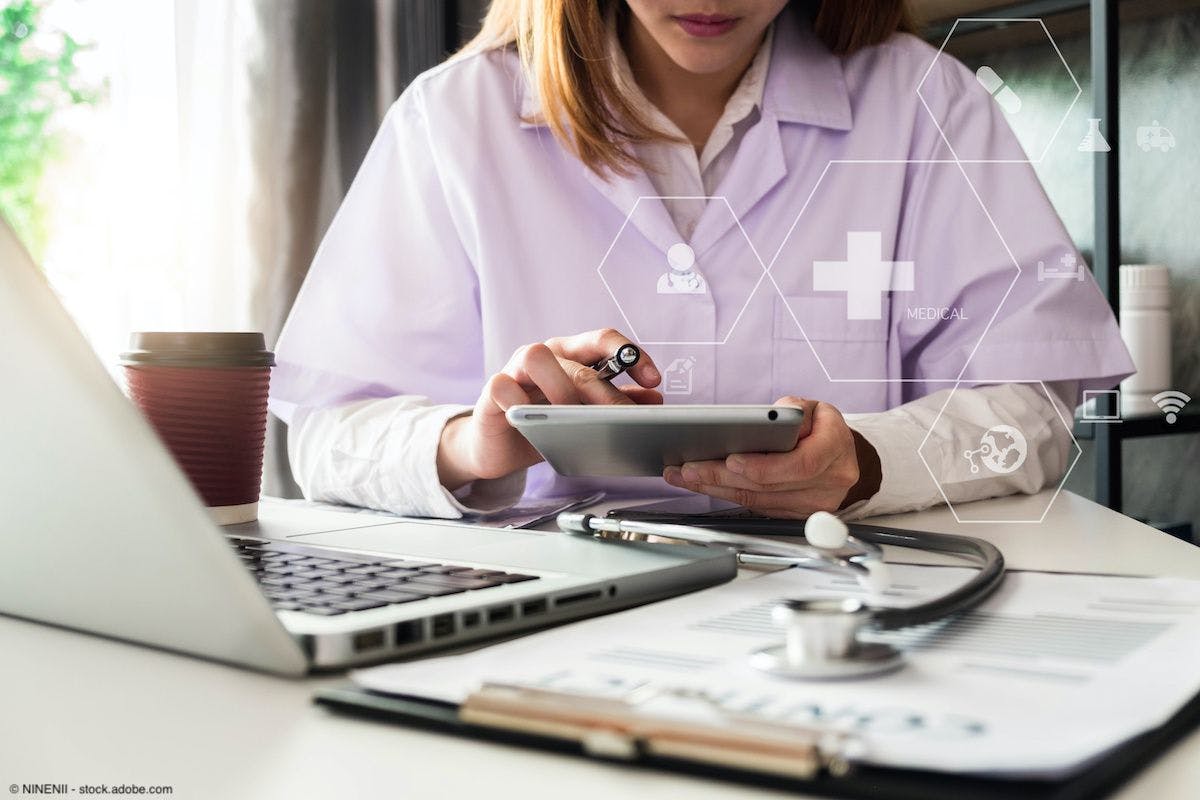News
Article
Urology Times Journal
Open Payments 2022: An analysis of industry payments to urologists
Author(s):
"A lingering question is whether the act is increasing patient knowledge about their physicians’ receipt of payments from the industry (or whether they care)," writes Robert A. Dowling, MD.
On June 30, 2023, the Centers for Medicare & Medicaid Services (CMS) published its Open Payments data and summary report for 2022. As a reminder, a section of the Affordable Care Act, the Physician Payments Sunshine Act, requires that group purchasing organizations and manufacturers of drugs, devices, biologicals, and medical supplies report payments and other transfers of value to physicians to CMS. The act’s requirements stem from a perception that payments to physicians could influence their behavior and a belief that conflicts of interest might be mitigated by transparent public reporting. In 2018, a study examining payments received by the authors of urology clinical guidelines found that nearly 50% of the authors received more than $10,000 from the industry and that 37% of the author disclosure statements were inaccurate.1 A systematic review of the same topic found similar results across other specialties.2 A recent paper suggested that urologists who received industry payments from device manufacturers might be influenced to publish positive positions on that company’s device.3 As I have reported in the past, payments to physicians dropped sharply during the COVID-19 pandemic. In this first of 2 articles, I will review some information, trends, and analysis about general payments to urologists reported under this program in 2022.
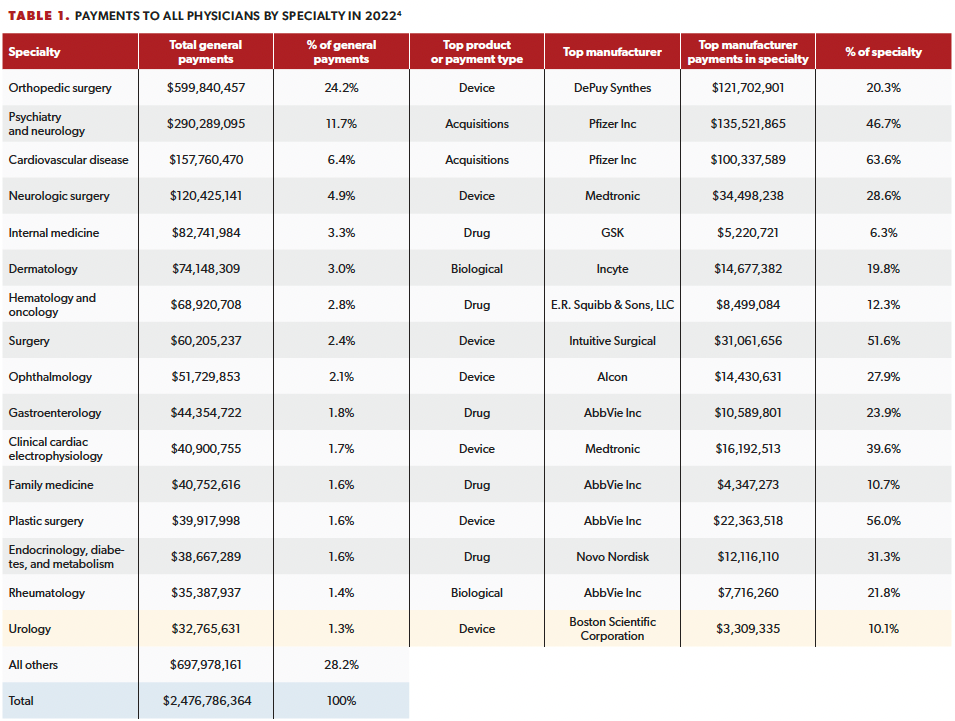
In 2022, $12.59 billion in payments or investment value was reported by 1742 unique companies to physicians, nonphysician practitioners, teaching hospitals, and other entities; $7.6 billion in payments (60% of reported payments) was for research studies.4 The total amount of general (nonresearch-related) payments to 588,514 individual physician recipients was $2.48 billion, up significantly from the prior 2 years. Payments to orthopedic surgeons accounted for almost a quarter of all general payments to physicians; other top specialties receiving payments included psychiatry/neurology (11.7%), cardiology (6.4%), neurosurgery (4.9%), and internal medicine (3.3%). Urologists received 1.3% of the payments. Table 14 summarizes payments by specialty, product type, and the top manufacturer contributing to the specialty in 2022; the data highlight that a single manufacturer is often responsible for a large share of payments to physicians within a specialty. Table 24 summarizes payments from the top 10 manufacturers contributing general payments in 2022.

A total of 9401 urologists received a total of $32,765,630 in general payments from 416 unique manufacturers in 2022. The largest sum of payments to any urologist was $2,367,282, and the average sum of payments to a urologist in 2022 was $3485, unchanged from the previous year. Figure 14 summarizes trends in payments to urologists over the past 5 years and shows the effect of the COVID-19 pandemic on payments.
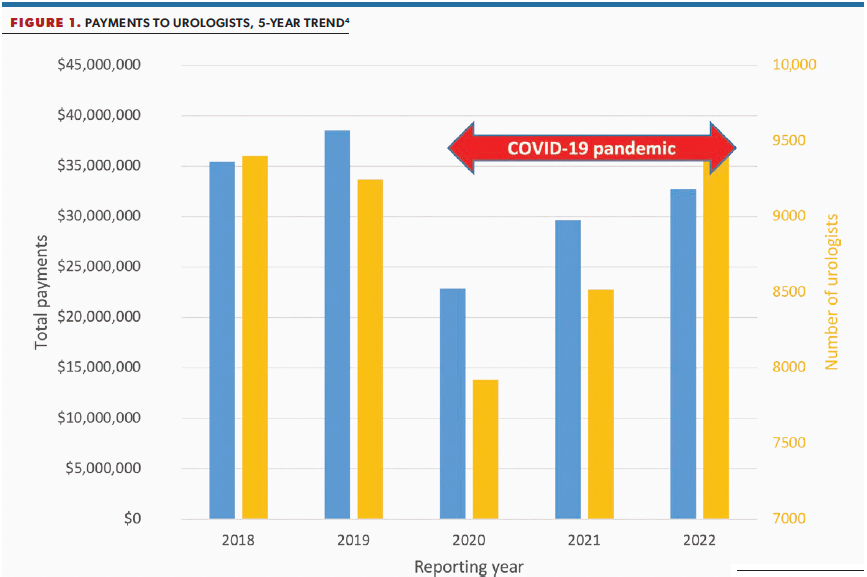
As with past years, in 2022, most of the payments went to a small number of individuals: Fifty-one urologists received more than $100,000, and most urology recipients received less than $1000 each (average in this subgroup, $305). See Figure 24 for a distribution of payments by group. In 2022, 54% of the payments were associated with a device, 25% with a drug, and 4% with a biological (Figure 34). Tables 3 and 44 detail 2022 payments over $100,000 to urologists by device and drug manufacturer.4

Reportable payments to physicians can take many forms, including speaking, consulting, travel and lodging, and royalties or licenses. Ninety percent of the payments to urologists were small amounts for food and beverage, with each urologist receiving approximately $600 a year. The largest single payments tend to be for royalties or licenses, typically related to a medical device. Almost one-third of payments to urologists in 2022 were those related to “compensation for services other than consulting, including serving as faculty or as a speaker at a venue other than a continuing education program.” The Office of Inspector General (OIG) at the US Department of Health & Human Services has long taken an interest in (and skeptical view of) manufacturer-sponsored speaking programs and cites findings from several studies that suggest speakers and attendees are more likely to prescribe or order the sponsor’s products, potentially an improper inducement. In 2020, the OIG issued a special fraud alert on the risks of speaking programs and took the additional step of publishing the alert in the Federal Register in late 2022, including this statement: “HCPs [health care providers] should likewise consider the risks of soliciting or receiving remuneration related to speaking programs given other available means to gather information relevant to providing appropriate treatment for patients.”5 It is noteworthy that manufacturers spent nearly $10 million on these programs in the specialty in the past year.
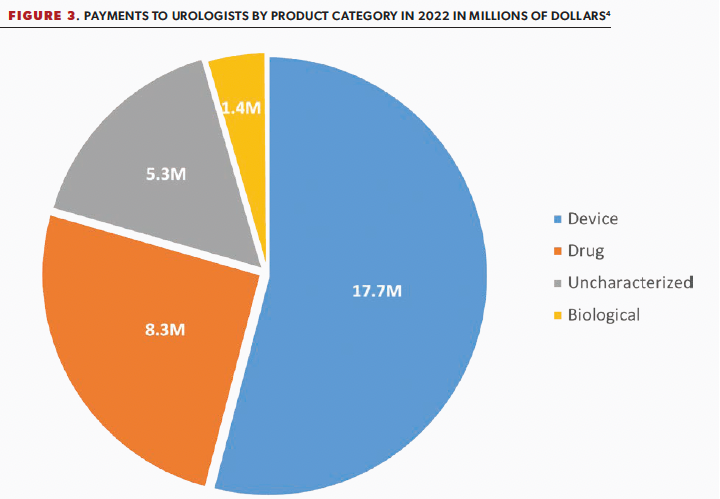
A closer look at transfers of value for speaking programs reveals that a small handful of urologists (19) received more than $100,000 in 2022. Most recipients in this category (60%) received less than $10,000. The payments to these urologists were concentrated in a small number of product categories; oncology (prostate cancer) drugs and benign prostatic hyperplasia devices made up nearly half the payment amount for speaking fees.
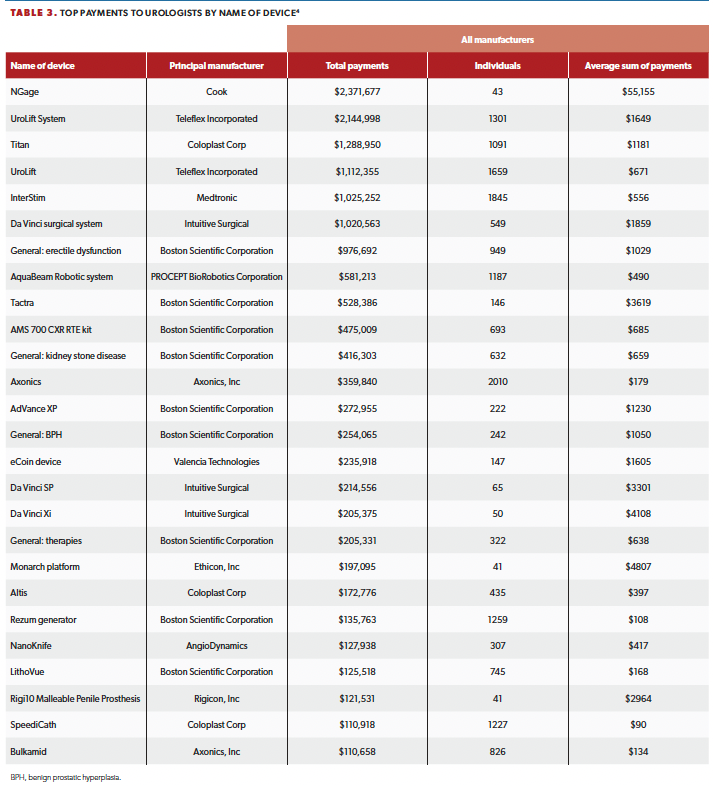
If you are interested in comparing your own data to these summary statistics, follow these steps:
1. Go to 2022 General Payment Data explorer at https://openpaymentsdata.cms.gov/dataset/df01c2f8-dc1f-4e79-96cb-8208beaf143c#data-table.
2. Under the Column Name, choose an identifier such as your name or National Provider Identifier number, select “Is” for the operator, and enter the value.
3. Add additional filters if you want to limit the results in a specific way.
4. Export the view to a comma-separated values file and open with a spreadsheet program.
5. Each row of this table is a payment. Use your spreadsheet’s summary and pivot table functions to analyze your data.
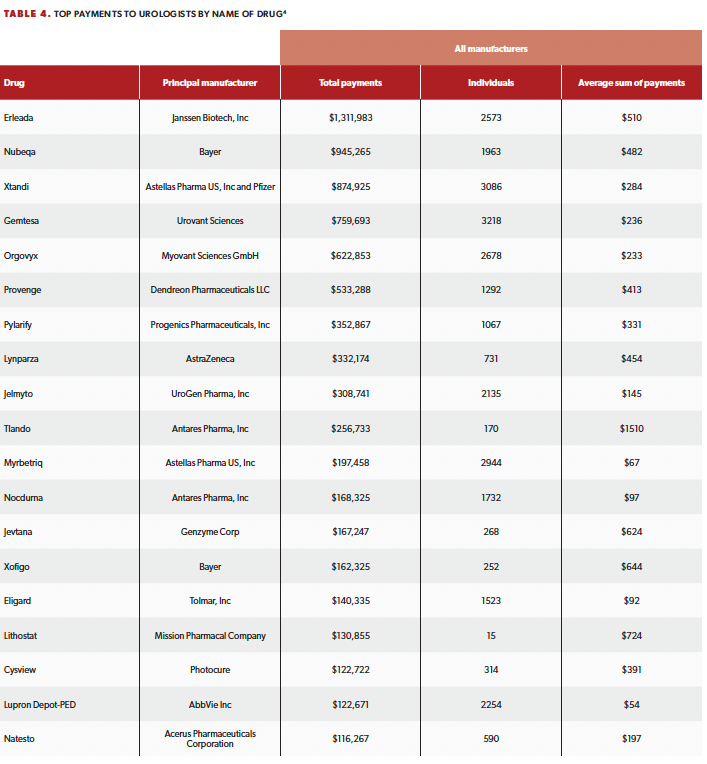
The bottom line and why it matters
The Physician Payments Sunshine Act was implemented 10 years ago, and CMS has collected large amounts of data on payments to physicians by device and drug manufacturers. Most payments to urologists are small amounts for food and beverage and are unlikely to have a significant bearing on physician behavior. However, a handful of urologists each year have significant transfers of value related to speaking fees, and the area is under careful scrutiny by the OIG for potential violations of antikickback and fraud and abuse statutes. A lingering question is whether the act is increasing patient knowledge about their physicians’ receipt of payments from the industry (or whether they care). There is some objective evidence that this effort at transparency has failed to reach any patient audience.6 At present, the primary audience of Open Payments data are regulators, policy makers, watchdogs, and physicians. Urologists should be aware that these data are reported annually and are publicly available.
References
1. Carlisle A, Bowers A, Wayant C, Meyer C, Vassar M. Financial conflicts of interest among authors of urology clinical practice guidelines. Eur Urol. 2018;74(3):348-354. doi:10.1016/j.eururo.2018.04.023
2. Tabatabavakili A, Khan R, Scaffidi MA, Gimpaya N, Lightfoot D, Grover SC. Financial conflicts of interest in clinical practice guidelines: a systematic review. Mayo Clin Proc Innov Qual Outcomes. 2021;5(2):466-475. doi:10.1016/j.mayocpiqo.2020.09.016
3. Singh A, Faris S, Agarwal P, Reynolds LF, Modi PK. Association between industry payments and published position on use of devices for the treatment of lower urinary tract symptoms. Urology. 2022;159:87-92. doi:10.1016/j.urology.2021.10.025
4. The facts about Open Payments data. Centers for Medicare & Medicaid Services. Accessed July 5, 2023. https://openpaymentsdata.cms.gov/summary
5. Demske GD; US Department of Health & Human Services. Publication of OIG special fraud alerts. Fed Regist. 2022;87(162):51683-51687
6. Kanter GP, Carpenter D, Lehmann L, Mello MM. Effect of the public disclosure of industry payments information on patients: results from a population-based natural experiment. BMJ Open. 2019;9(2):e024020. doi:10.1136/bmjopen-2018-024020
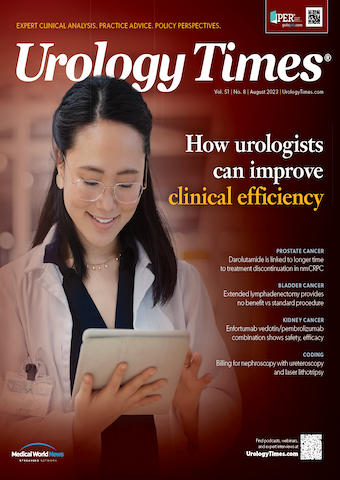
Newsletter
Stay current with the latest urology news and practice-changing insights — sign up now for the essential updates every urologist needs.



